Exploring New York’s Industrial Past in "Cathedrals of Industry"
Join photographer Michael L. Horowitz for a journey through 50 years of photographs!


If the New York Botanical Garden is the city’s greatest cultural institution you’ve never visited, you’ll want to rectify that immediately. Founded in 1891 by forward-thinking citizens and funded by taxpayers as well as the nation’s most famous moguls (Carnegie, Vanderbilt, and Morgan were on the founding board), the NYBG was remarkable from day one.
Today, the New York Botanical Garden’s extraordinary library houses 75% of the world’s literature on systematic botany and 70% of the world’s published floras, says the New York Times.
A living academic campus as well as a botanical garden, it hosts the most important plant collections in the Western Hemisphere and archives over one million botanical artifacts. Its scientists travel to the four corners of the world on research expeditions and name 60-80 species a year. Its 50-acre forest of oaks and hemlocks, which has never been harvested, is New York City’s oldest. It is a place of more firsts and accolades than can be easily numbered. President Gregory Long calls it an advocate for the plant kingdom as well as a public museum without a roof.
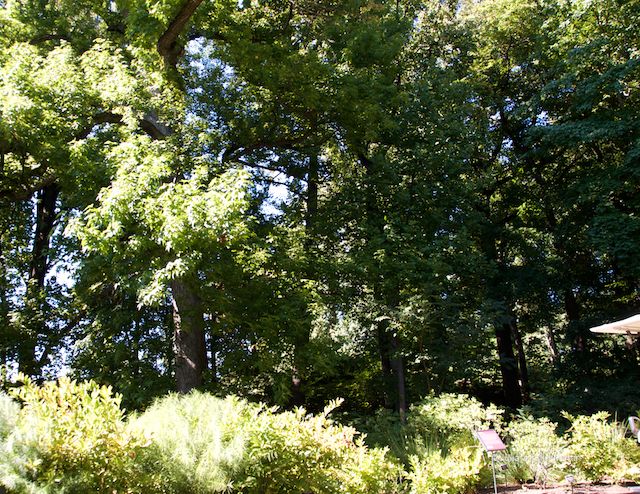
Todd Forrest, Arthur Ross Vice President for Horticulture and Living Collections, calls October his favorite month (though he says May is a strong second). “The garden changes as the light changes,” he says. “You’ll become alert to the many shades and textures of green as the leaves grow more pale before bursting into the glorious mosaic of orange, yellow, gold, brown, and scarlet.” Touring the garden with Forrest is a bit like undertaking a walking seminar with the best science teacher you ever had. “What do you see?” he asks, gesturing towards the dense combination of trees, bushes, and undergrowth in front of us.
We just stare but Vuka Roussakis, a frequent visitor, volunteers, “There are an awful lot of fallen trees.” This turns out to be a correct and excellent answer as Forrest points to the “ancient beech and sweetgums” lying on the ground. Hurricane Sandy inflicted substantial damage in October 2012, destroying some 500 trees. Forrest says he knew many of the trees individually but also notes that death and disturbance are part of regeneration since trunks and branches will decompose, releasing their nutrients back into the soil to feed the next generation of trees. This spurs a discussion of the singular appropriateness of the Friday Kahlo exhibition: death, regeneration, life.
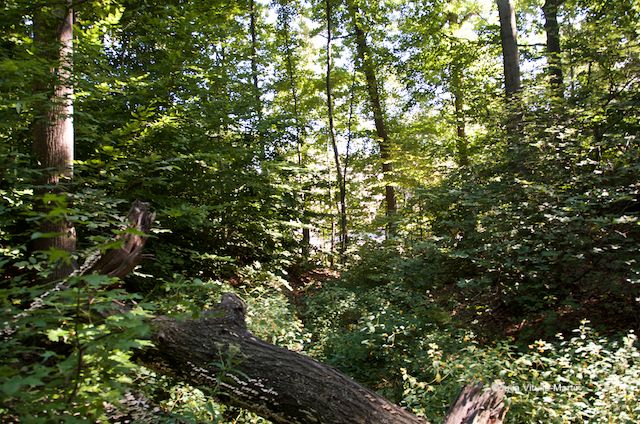
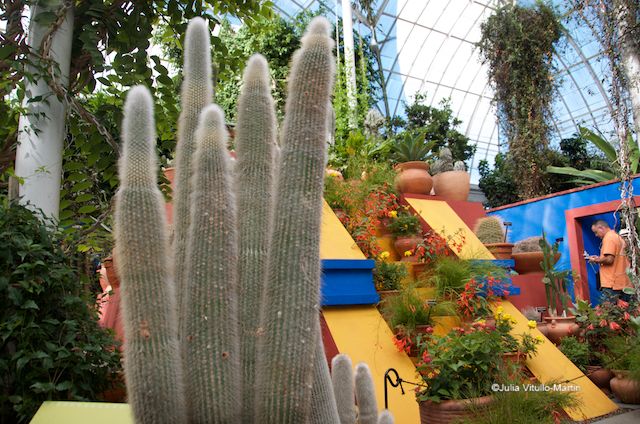
The NYBG’s 2008 exhibition, Moore in America, was a blockbuster. Its 2012 exhibit, Monet’s Garden, was its most successful ever, attracting some 373,000 visitors. But Kahlo is on track for 500,000+, says Nicholas Leshi, Director of Public Relations. The Metz Library offers a room of Kahlo’s paintings and an excellent presentation on Mexico City’s architecture, planning, and neighborhoods. The Haupt displays an abstract of Kahlo’s house, Casa Azul, along with many of her plantings.
The NYBG has brilliantly combined its academic approaches with extracurricular activities, like poetry readings, lectures, fabulous bands, flower demonstrations, and Frida lookalike contests. New Yorkers flock to the garden, streaming in when the gates open for Frida Al Fresco evenings.
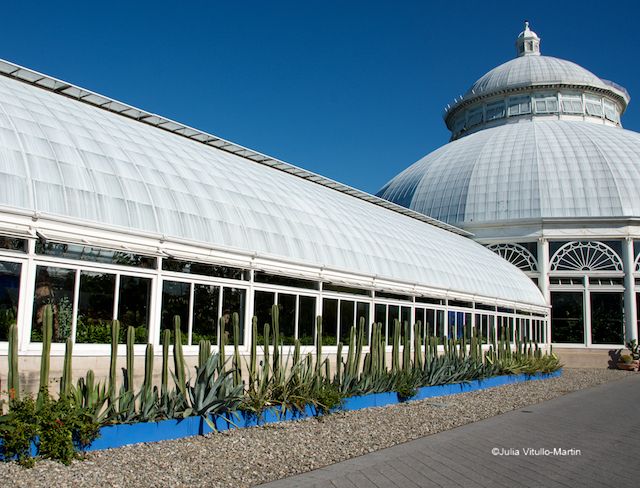
Still, many visitors will be taken aback by the dead hummingbird and the necklace of thorns (reminiscent of the crown of thorns) around Frida’s neck. Death is always part of her art. “I paint flowers so they will not die,” Kahlo once said. The writer Carlos Fuentes called her a pantheist who was in love with the world as garden, “with everything that was alive.” He added, “She wants to sacrilize everything she touches.” To a North American sensibility Kahlo’s obsession with life and death may seem eccentric, but in the context of the garden the obsession becomes normal. A garden is all about life, death, sustainability, and regeneration. She also wrote, “Nothing is absolute. Everything changes, everything moves, everything revolves, everything flies and goes away.” This is as true of a garden as it is of life. Indeed, it is one of NYBG’s ongoing dilemmas as it works to conserve its landscape, including its old-growth forest.
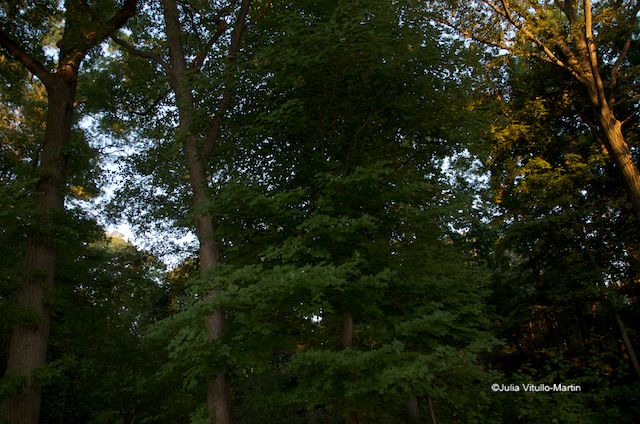
The Thain Family Forest is the largest uncut expanse of New York’s original wooded topography. To preserve the forest for future generations the NYBG plants native plants, manages invasive species, and undertakes research. Ironically, the devastation of Hurricane Sandy (the worst storm in NYBG history) generated a unique research opportunity for understanding the forest’s history. The rings of the felled trunks, many 300 years old, release otherwise unavailable scientific data, including weather records. “By analyzing tree growth from the rings we’ll be able to document historic weather patterns and actual climate change,” says Forrest.
Even as one NYBG goal is to study spontaneous nature the ongoing mission is to maintain the forest through active management. “We remove non-native plants and replant with native,” says Forrest. “But it’s not that easy. How do invasive plants get here? Some are introduced from our own garden, having arrived here on their own. And many are beautiful, making their removal painful.”
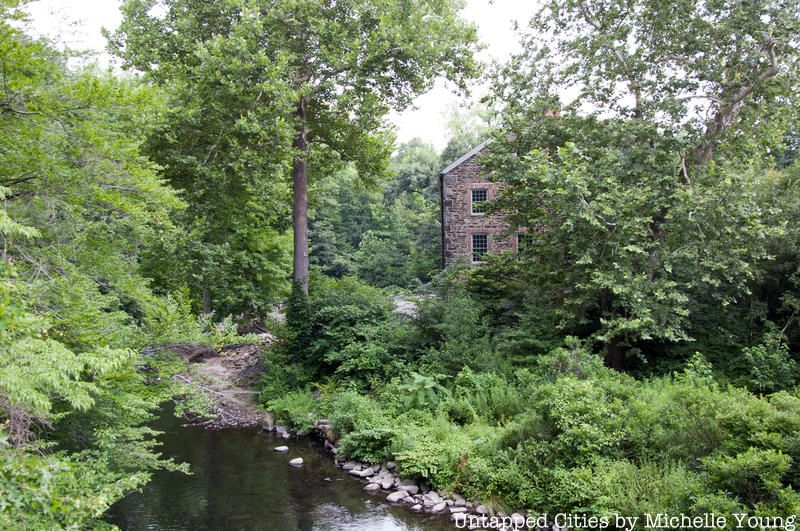
Thanks to relentless, knowledgeable advocates, the Bronx River is being restored to good health—so much so that beavers, who had disappeared from New York over 200 years ago, are returning. This is important because beavers are a keystone species, meaning they have a disproportionately large impact on the environment, creating or maintaining habitat for other animals and plants.
Named José in honor of Congressman José Serrano, who had secured substantial federal funding to restore the habitat, the 21st century’s first Bronx beaver built a 12-foot lodge on the river. “We’re delighted to welcome José and all he represents to the garden,” says Todd Forrest, “but we’ll keep an eye on his activities. We really don’t want him felling our old-growth trees.”
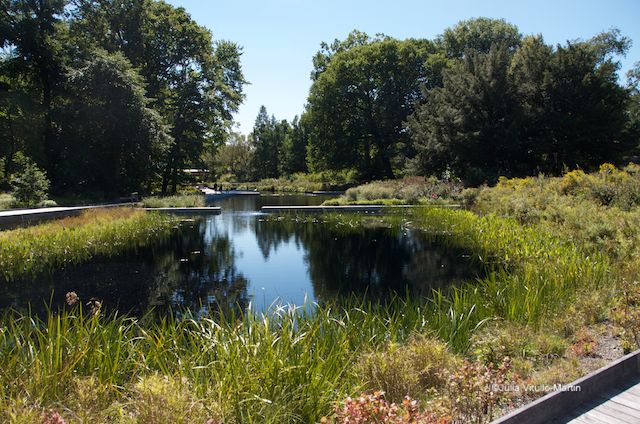
The 3 1/2 acre Native Plant Garden is a year-round horticultural spectacle celebrating the beauty, range, and ecological significance of Northeastern plants, displaying over 450 species distributed among nearly 100,000 native trees, shrubs, ferns, grasses, and wildflowers. The garden’s decking, promenade, and benches are built with lumber from native, sustainably harvested black locust trees that have a special place in American history, says tour guide Joyce Newman.
Learning of black locust’s durable, flexible, and rot-resistant features from Native Americans, early pioneers used black locust for fence posts, ship masts, and for pegs—called trunnels—in shipbuilding. When wet, the wood expands and becomes leak proof, making the ship trunnels so strong that they outlasted the ship hulls. Naturalist Donald Peattie says that the British claimed that they were defeated on Lake Champlain in the War of 1812 because of the superiority of the “locust fleet” built by Americans with the trunnels.
What’s more, while the NYBG has embraced black locust as a beautiful, sustainable tree, some botanists regard it as an invasive pest, says Newman, because locust trees grow rapidly by sending out underground stems that send up shoots to form new trees.
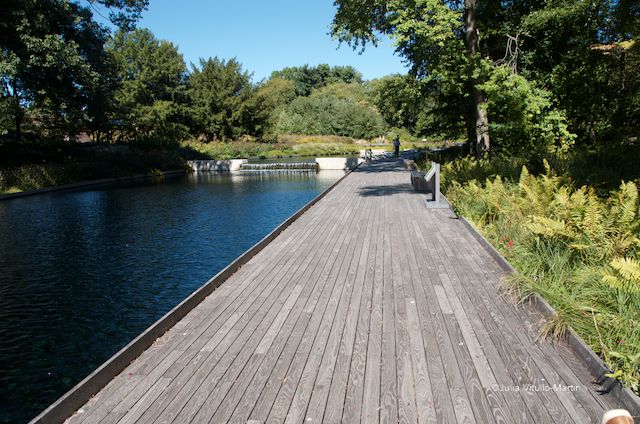
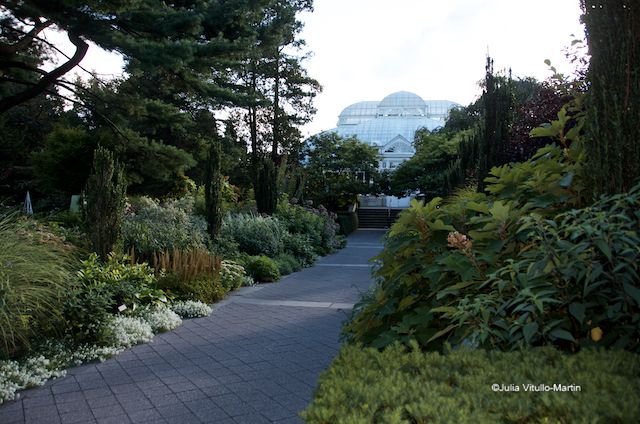
Beginning with Calvert Vaux, who created the initial design in 1895, through John Brinley, the Olmsted Brothers, Beatrix Farrand, Marian Coffin, Penelope Hobhouse, Ellen Shipman, Dan Kiley, Robert Zion, Piet Oudulf, and Lynden B. Miller today, the NYBG has been designed and tended by the nation’s finest landscape architects and horticulturalists.
Designers had to address questions of circulation and maintenance as well as beauty. An important criterion these days is sustainability. Thus Lynden Miller’s “refreshing” of the Ladies’ Border included an experimental element, says the NYBG. Plants once thought half-hardy for this planting zone are being tested for their ability to survive as the climate changes. As Todd Forrest says, “The garden is alive, which means it changes and grows and adapts.”
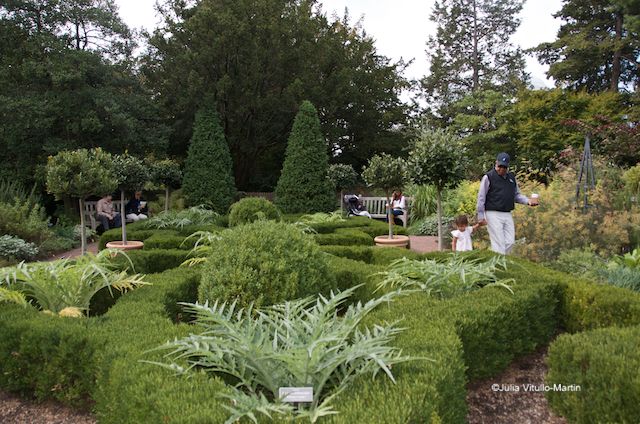
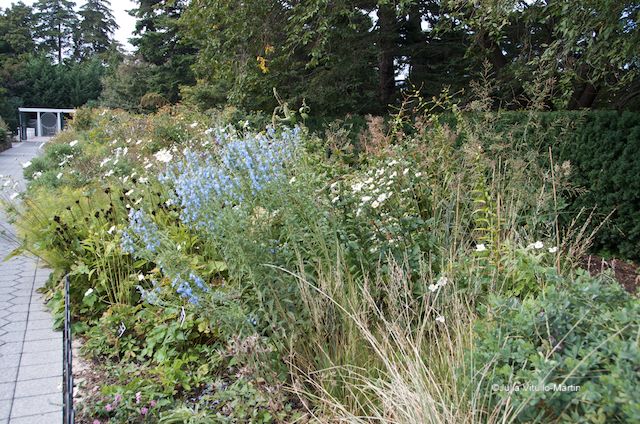
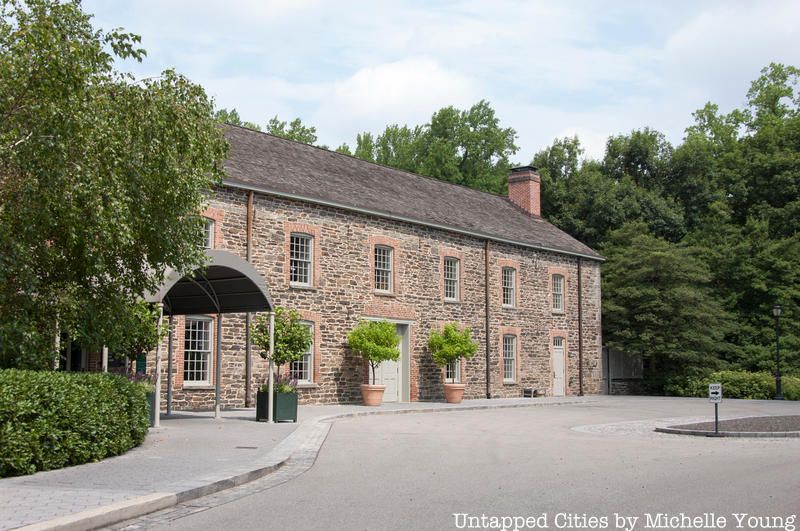
Even though, in the words of president Gregory Long, “We aren’t about the buildings, we’re about the landscape,” NYBG has commissioned outstanding buildings. In fact, the NYBG may not have a single mediocre building. Three buildings—the Lillian and Amy Goldman Stone Mill, the Enid A. Haupt Conservatory, and the Museum Building—are designated both as national and New York City landmarks. The neo-Renaissance Museum Building (1901), its Fountain of Life (1905), and its Tulip Tree Allée (1903-1911), are part of the Beaux Arts complex. When the NYBG decided they needed an addition for research, they knew they had to tread carefully. The result is the elegant Polshek-designed William and Lynda Steere Herbarium, the centerpiece of NYBG’s botanical research program.
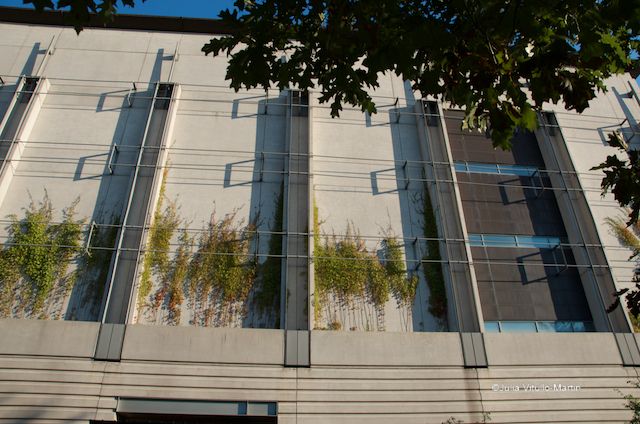
The handsome Nolen Greenhouses for Living Collections were designed by Mitchell/Giurgola Architects, and the Visitor Center by Hardy Holzman Pfeiffer.
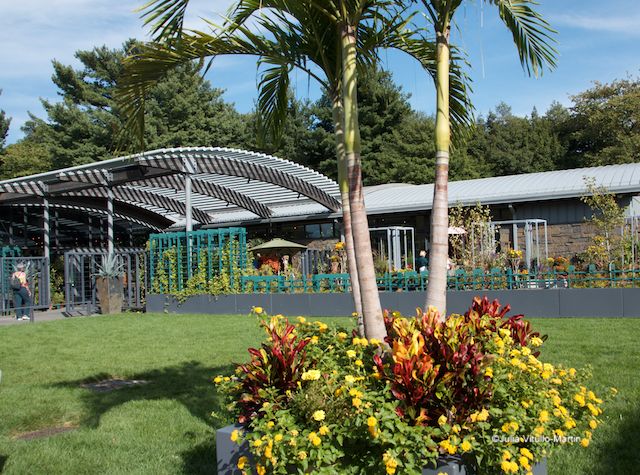
With its welcoming Visitor Center, its lovely and appropriate shop, fine book store, efficient tram, excellent maps, audio-visual tours, widespread accessibility, and its good food the NYBG has gone to unusual lengths to make its guests comfortable. The buildings are constructed of dark Hamilton New York State bluestone, wood, steel, and glass, combining, says the architect, the NYBG’s commitment to locally sourced materials with high-modern design. The idea is that the stone relates to the garden’s bedrock, the glass walls to the Haupt, and the wood to the forest.
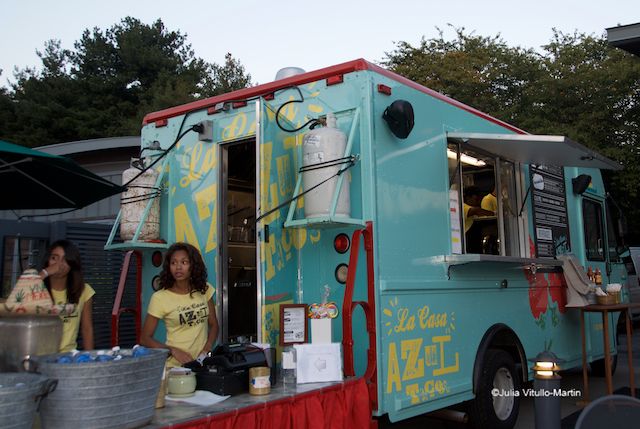
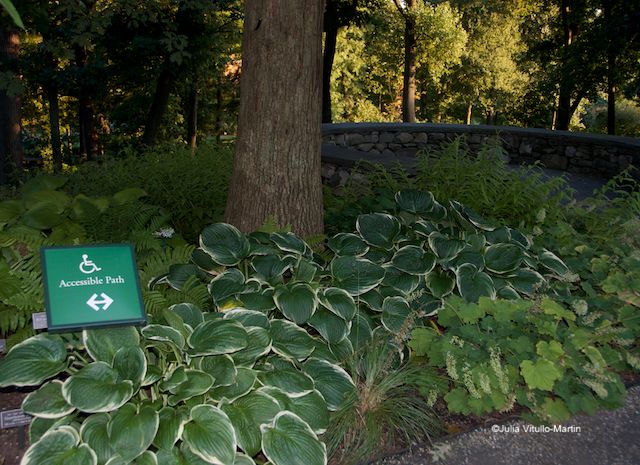
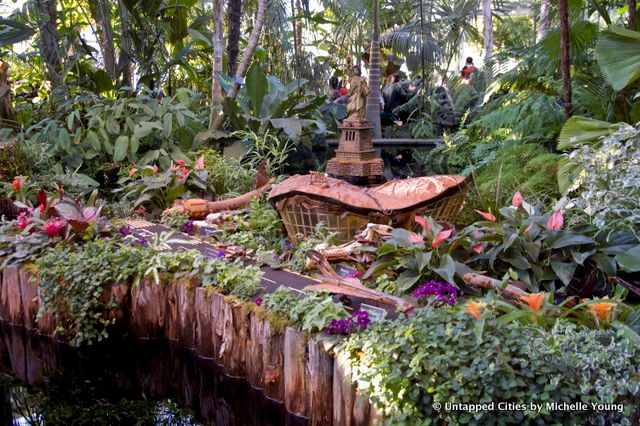
The next big event is the Holiday Train Show, opening November 21, in the Haupt. As Untapped Cities wrote in 2013: this is “a must-visit for architecture buffs, as well as kids.” Most of NYC’s architectural landmarks have been reproduced, constructed from plant parts by artist Paul Busse, who builds in the Haupt what Todd Forrest calls “a universe all its own.”
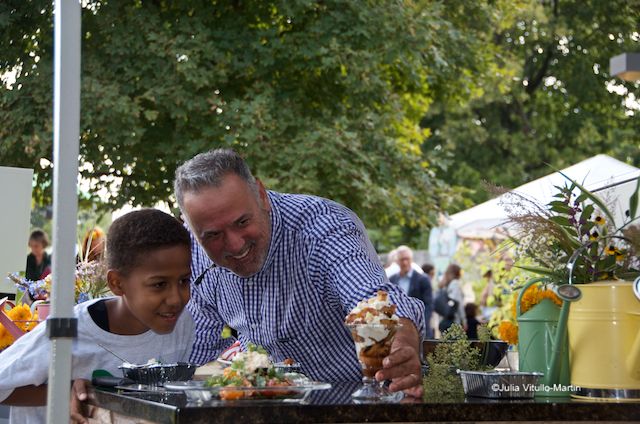
Children are embraced at the NYBG, and they are also put to work. The Edible Academy, for example, at the Ruth Rea Howell Family Garden, encourages children and adults to “play in the dirt,” growing and harvesting vegetables under watchful staff eyes. Kid-friendly recipes and cooking demonstrations help them prepare what they’ve grown. “Children tend their own plots,” says Edible Academy Director Toby Adams, “and discover the joys of eating food they’ve grown themselves.”
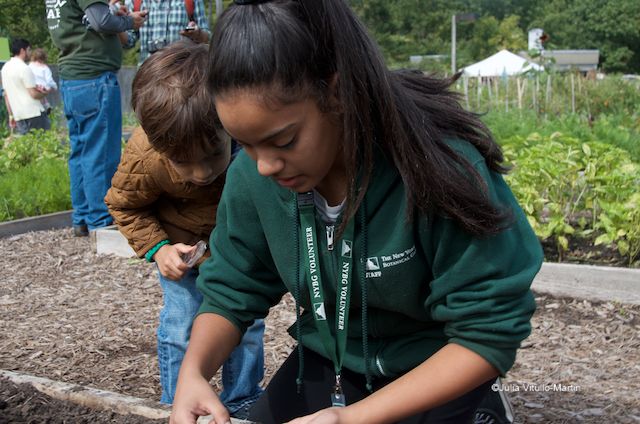
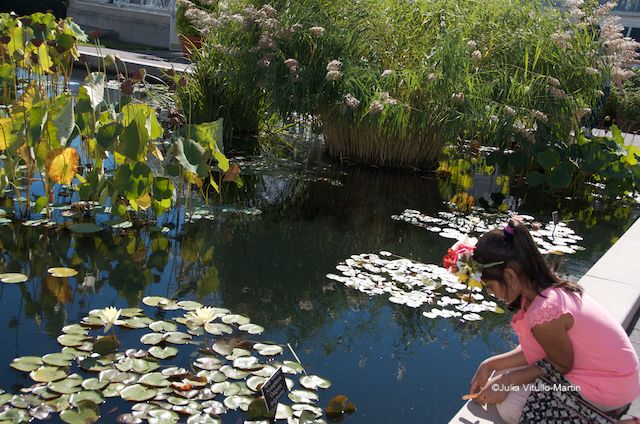
The New York Botanical Garden is located at 2900 Southern Boulevard, The Bronx, reachable by Metro-North Railroad, subway, or car. It is open year-round, Tuesday through Sunday, and holiday Mondays. Hours are typically 10AM to 6PM. Many levels of membership, starting at $40, are offered with an array of benefits.
Julia Vitullo-Martin is a Senior Fellow at Regional Plan Association. Get in touch with her @JuliaManhattan.
Subscribe to our newsletter